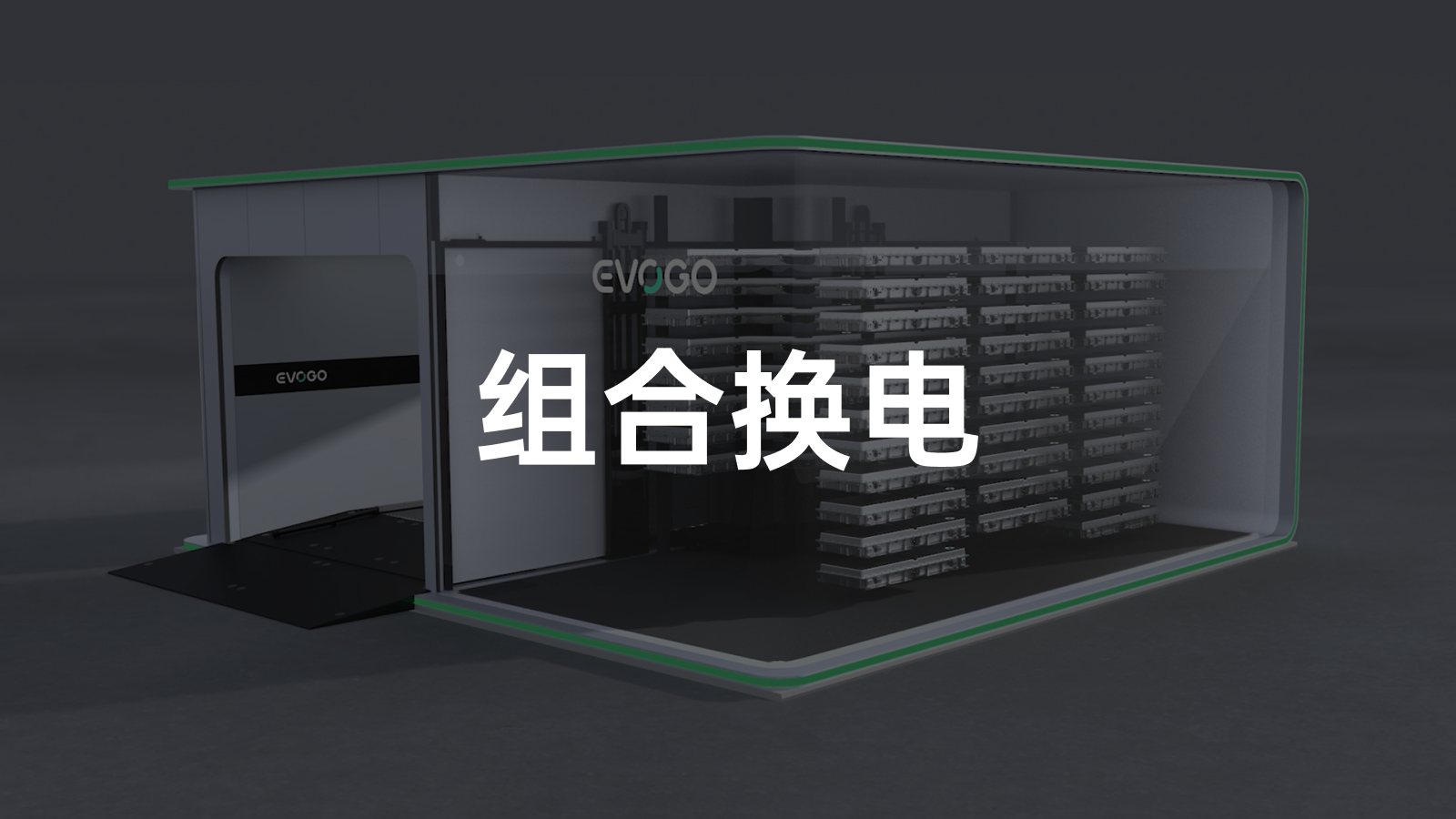The content of this article is sourced from 42how and has been translated by ChatGPT
On the afternoon of January 18th, CATL released its battery-swapping service brand EVOGO, which includes both individual battery-swapping blocks and a combination of battery-swapping solutions. The entire online launch only lasted for a short 10 minutes and the concept of “chocolate” was used throughout the presentation.
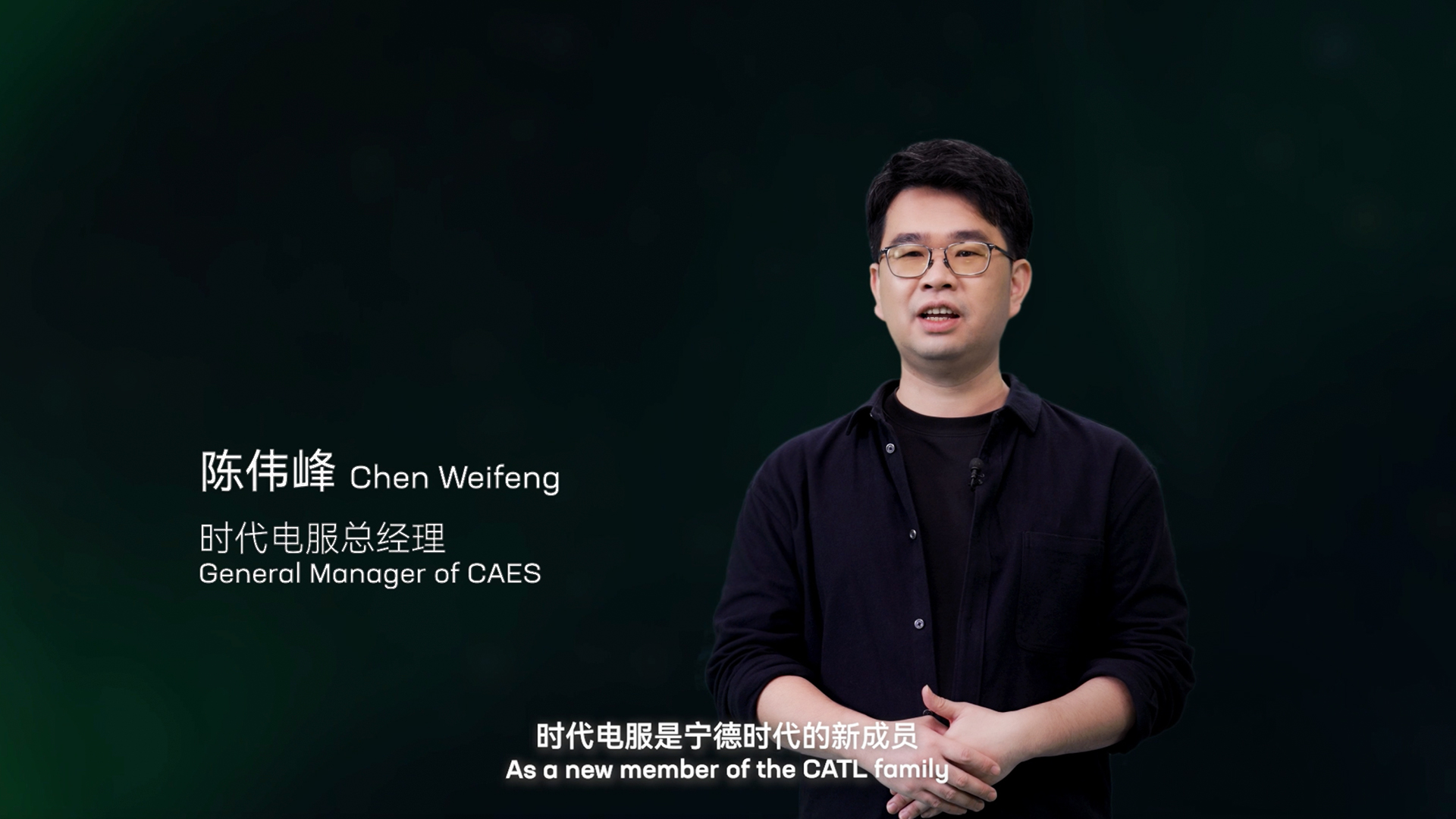
This was the first launch event from CATL’s Time Electric Services division and was presented by General Manager Chen Weifeng. Starting with the three main factors of driving range, charging convenience, and vehicle purchasing and operation costs, he combined the concepts of sharing, serviceization, and separating the vehicle from the battery, and proposed the “combination of battery-swapping solution”.
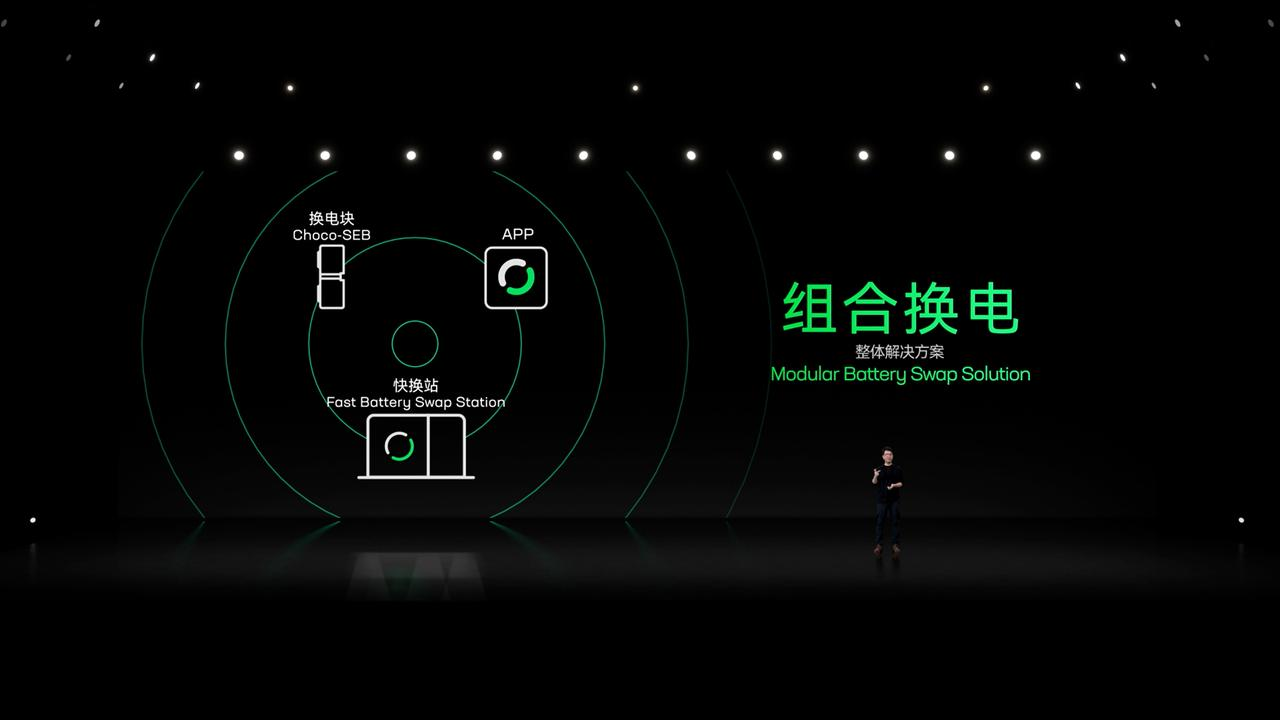
The overall solution consists of three core components and three main products:
- Chocolate battery-swapping blocks
- Quick-swapping stations
- App
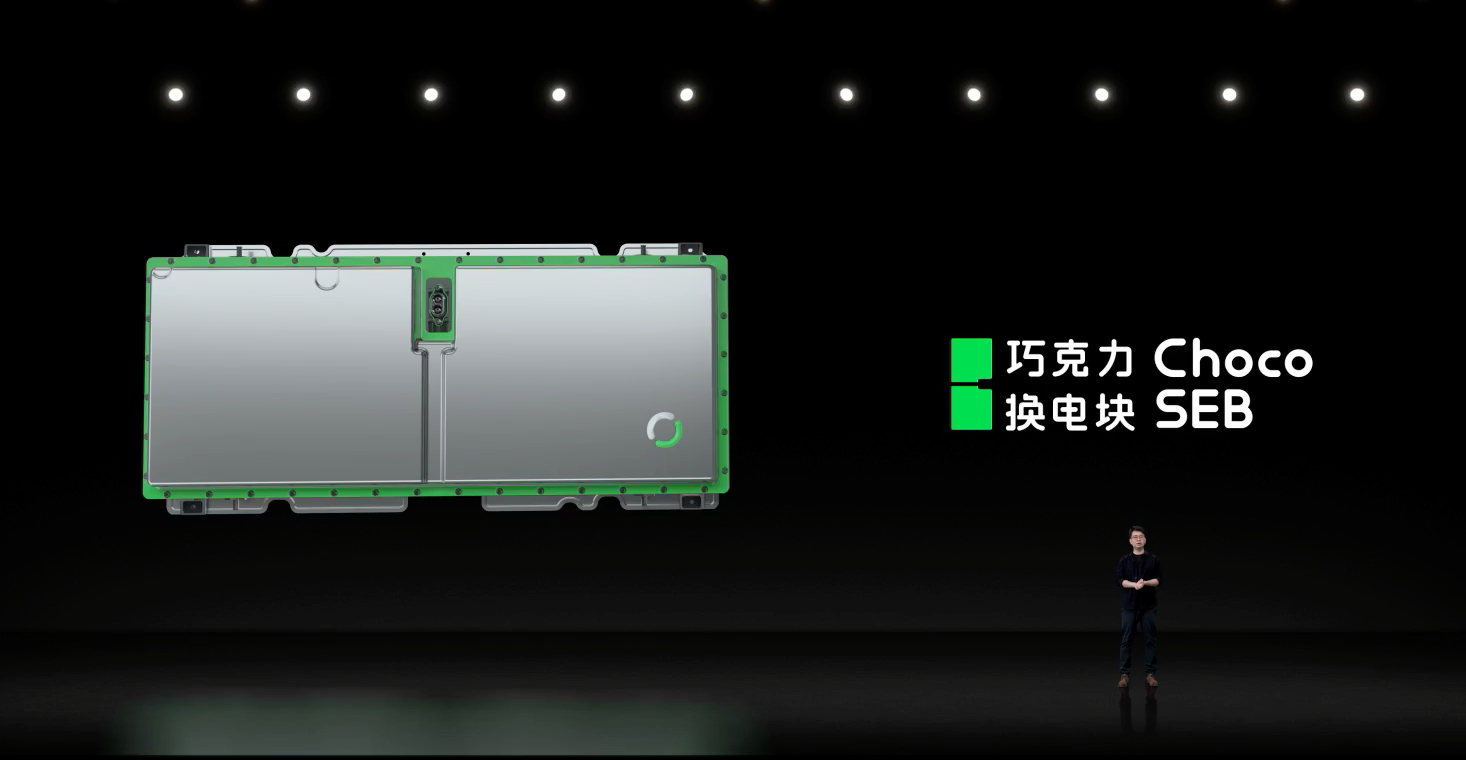
The main features can be summarized as follows:
The current mainstream battery-swapping module is designed to be modularized, like chocolate, with each block having a range of around 200 kilometers. Users can choose to connect 1-3 blocks based on their mileage requirements, and use it with A00 to C-level models. It can also be adapted to 80% of pure electric platforms that have been launched or will be introduced in the next three years.
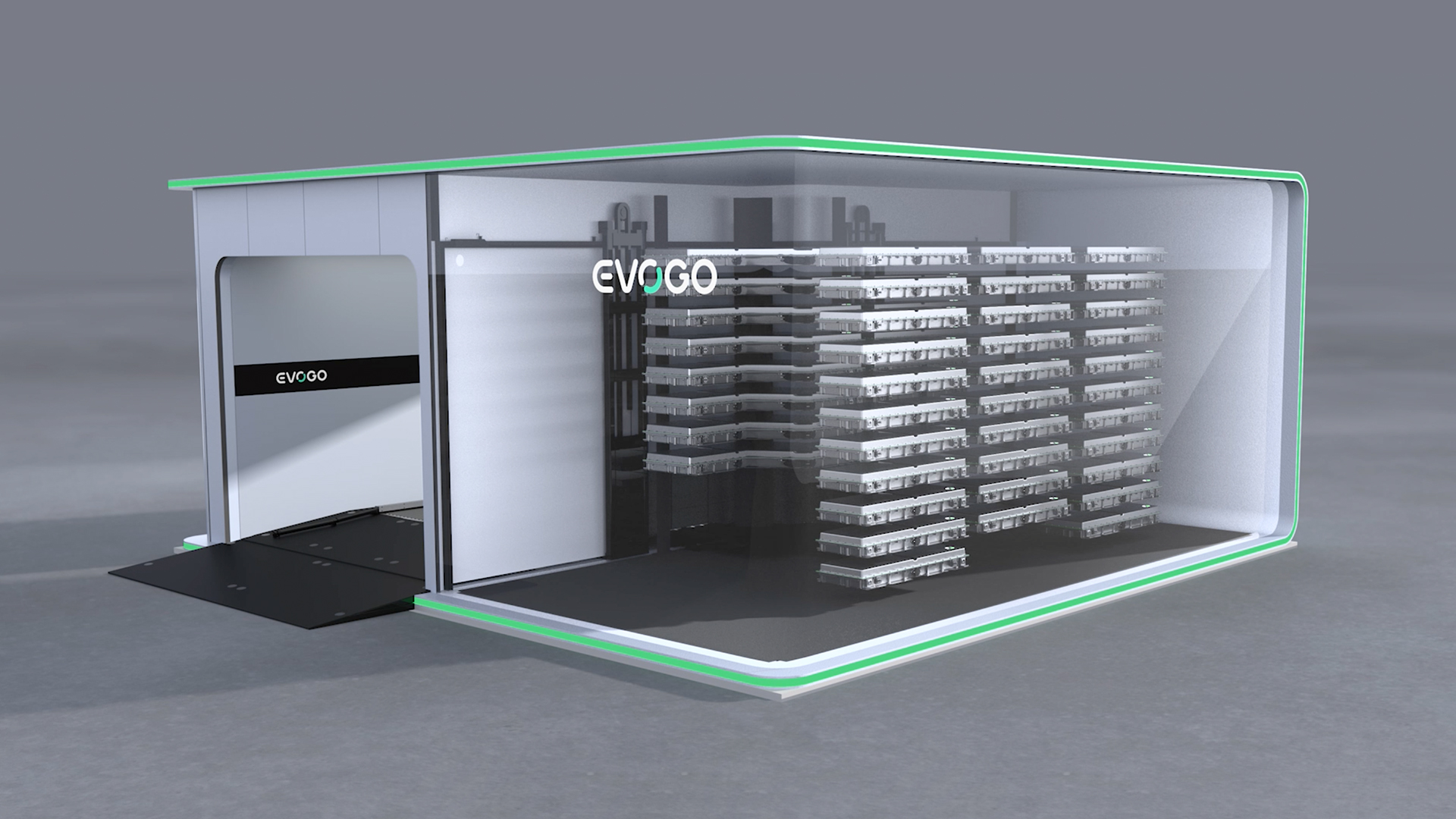
A single standard station covers an area of approximately three parking spaces and can store up to 48 battery-swapping blocks, with a 1-minute battery-swapping time for each block. The battery-swapping station can be adjusted according to the climate conditions in different regions. The connection between people, vehicles, stations and battery-swapping blocks is realized through the use of the App.
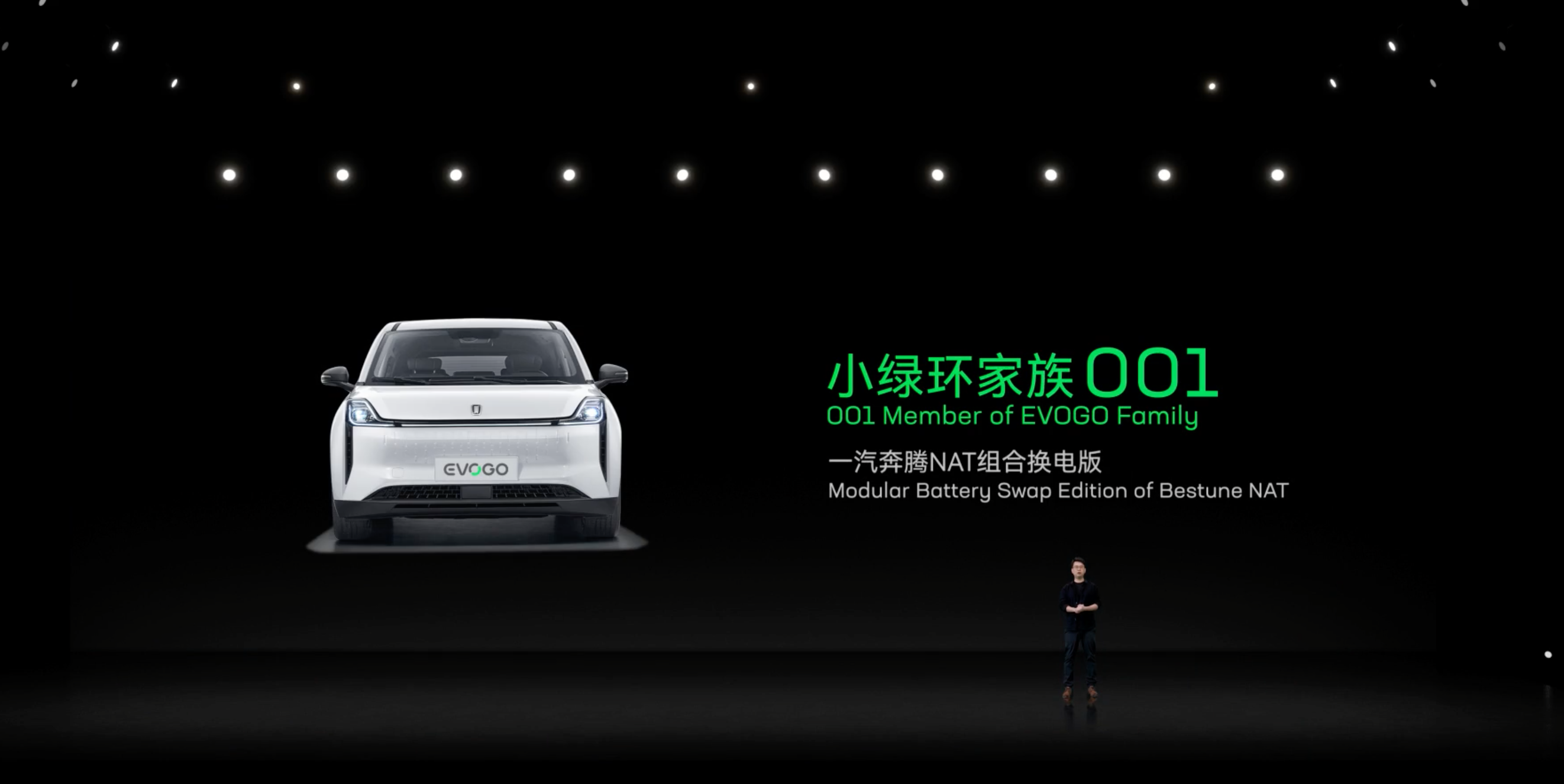
The launch event also showcased the first vehicle – FAW Bestune NAT – supporting EVOGO battery-swapping technology. Time Electric Services will launch battery-swapping services in 10 selected cities.
Time Electric Services expressed that battery-swapping services are open to all automakers and will invite more partners to join CATL to create a sustainable energy ecosystem.
Small is not a disadvantage
The modular design of the chocolate blocks is the biggest highlight of CATL’s battery-swapping solution.
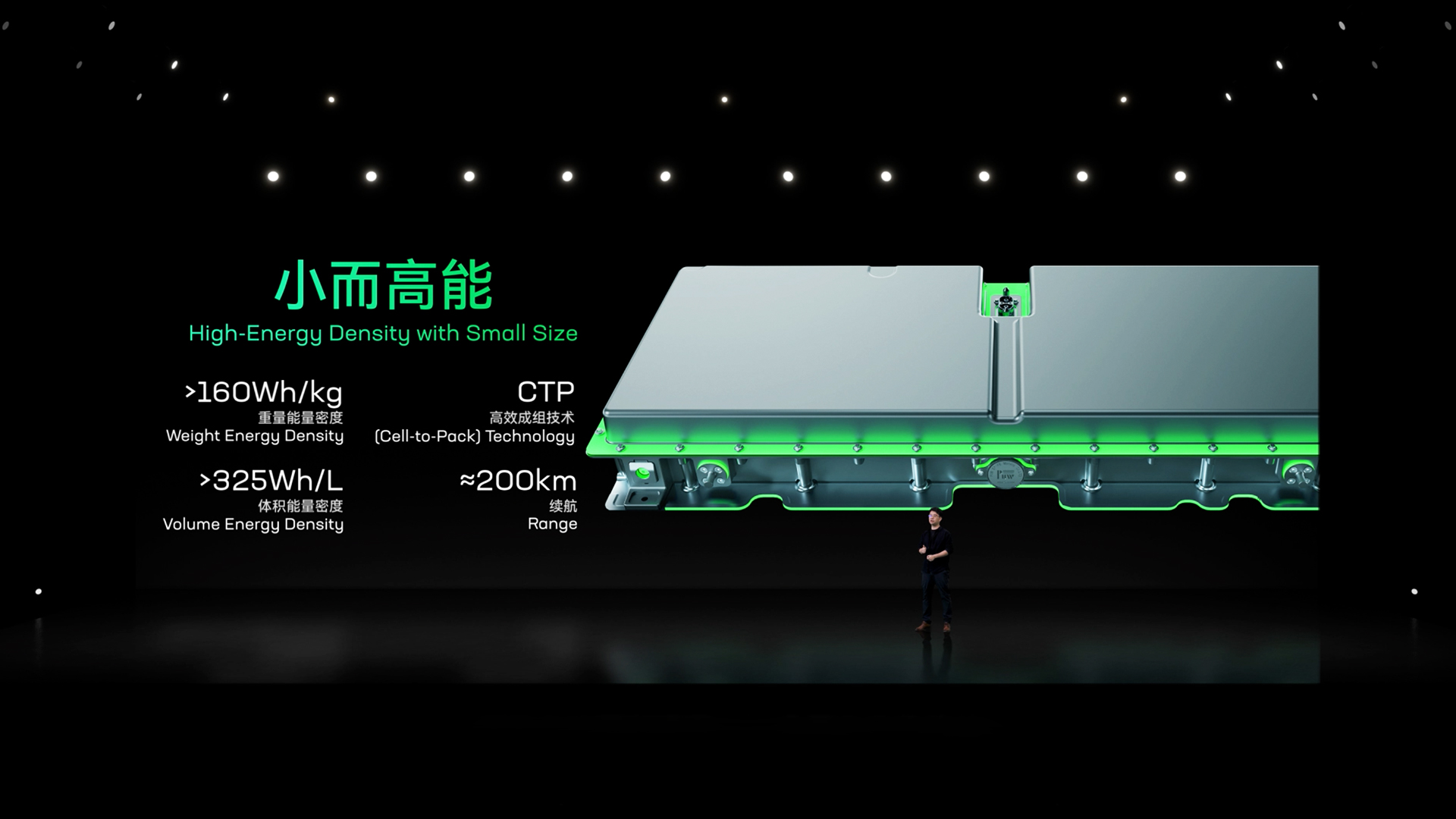 In terms of battery technology, the replacement batteries adopt Ningde Times’ latest CTP (Cell To Pack) technology. Each chocolate battery block has a capacity of 26.5 kWh, with an energy density exceeding 160 Wh/kg and a volumetric energy density exceeding 325 Wh/L. A single battery block can provide a range of about 200 kilometers and is compatible with most electric platforms developed for vehicles.
In terms of battery technology, the replacement batteries adopt Ningde Times’ latest CTP (Cell To Pack) technology. Each chocolate battery block has a capacity of 26.5 kWh, with an energy density exceeding 160 Wh/kg and a volumetric energy density exceeding 325 Wh/L. A single battery block can provide a range of about 200 kilometers and is compatible with most electric platforms developed for vehicles.
According to insiders, there is no liquid cooling system inside the battery block, and the temperature rise is directly controlled by the battery cells. Since the battery replacement process is completed at the battery swap station, thermal management mainly involves temperature control of the battery cells during the charging process, and the temperature control system has been integrated into the battery swap station.
To improve the reliability of plug-in components, the replacement battery block adopts wireless BMS technology for the first time, and the external interface of the replacement battery block only has high voltage positive and negative interfaces, without the need for BMS connection ports. Since BMS communication has high requirements, in the traditional battery swap mode, the BMS wiring harness of the battery pack is complex and the connection port is more complicated, which often poses challenges to reliability and durability. The wireless communication technology makes the chocolate battery block’s connection very simple.
Battery Swap, Focusing on “Swap”
So, what are the advantages of the combination swap mode compared to existing swap technologies?
Overall, the combination swap mode balances the relationship between range, charging convenience, and purchase and usage costs, and its main advantages are the compatibility with more vehicle models, the reduction of usage costs, and the improvement of the operational efficiency of battery swap stations.
First, the combination battery can better adapt to vehicles of different sizes. By adjusting the number of chocolate battery blocks, a more flexible battery pack size is achieved, with smaller space limitations, wider coverage, lower marginal costs of the system, and a better solution to the space adaptation problem of different vehicle models, achieving full adaptation from A00 to C-class models.
At the same time, the combination battery also increases the universality and utilization rate of single battery blocks. Compared with the uniform large-size battery packs in the current mainstream battery swap stations, it has outstanding flexibility and adaptability advantages. And the wider range of vehicle model adaptation means that more vehicle owners can use EVOGO’s battery swap services.
Secondly, for users, the chocolate battery block brings a more economical usage experience, and the biggest benefit is cost savings. The vast majority of electric vehicle owners only use 10%-20% of the total capacity of the battery pack in daily use, but in order to cope with low-frequency long-distance travel, electric vehicle users have to purchase larger-capacity battery packs to address range anxiety, resulting in a large amount of sunk costs.
The combination swap mode may bring a completely new experience for buying and using electric vehicles.Translated English Markdown text with HTML tags preserved:

During the car purchase stage, users can choose a small capacity battery pack, such as a car configuration with only one chocolate battery swapping block, which provides 200 kilometers of range sufficient for daily use. By saving one-third to two-thirds of the battery costs in the purchase process, the barrier to entry is greatly reduced.
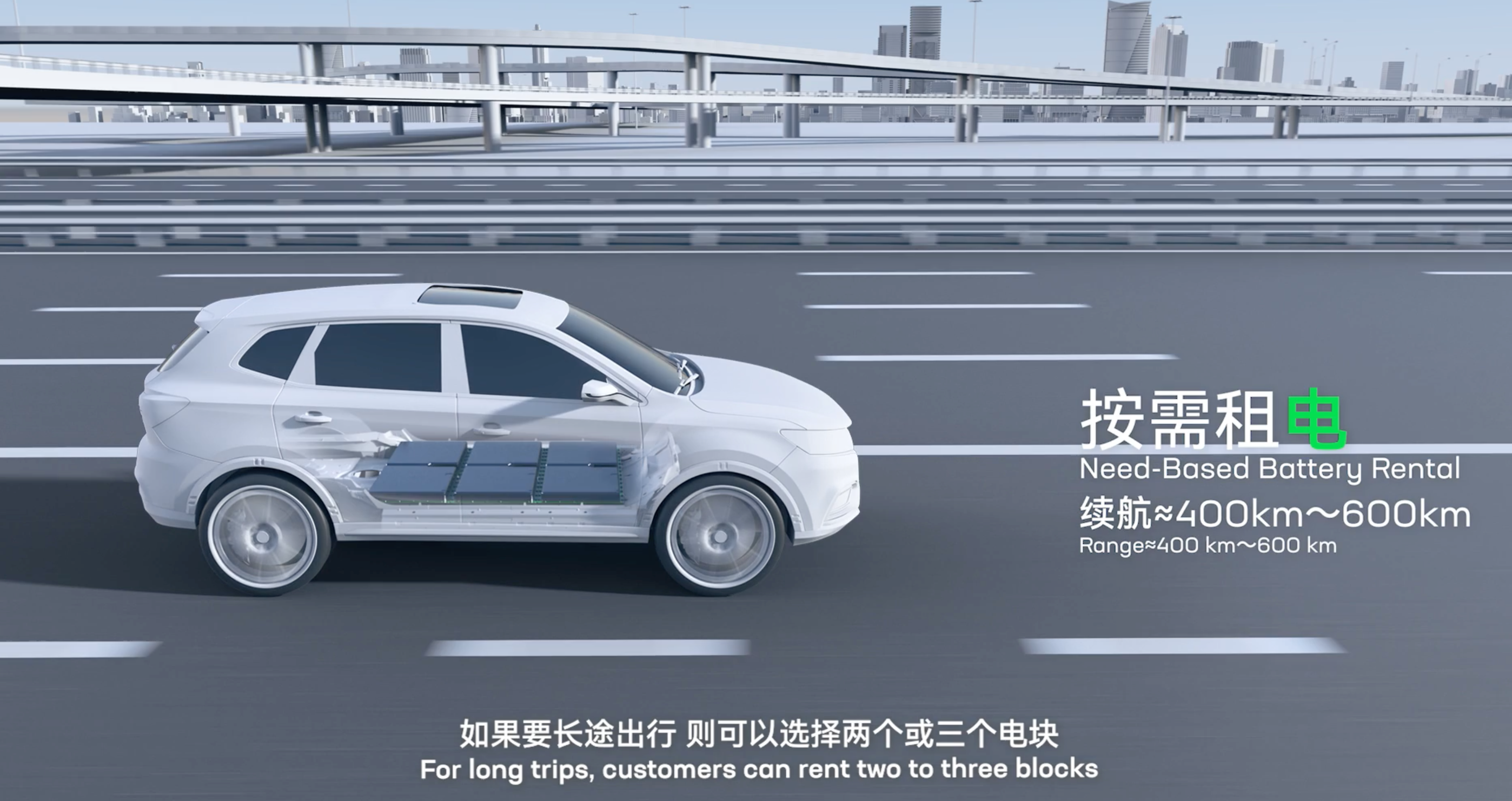
During the car usage stage, users can flexibly choose the number of battery swapping blocks according to their travel needs. A range of approximately 200-600 km can be achieved with a minimum of one block and a maximum of three blocks. Daily commuting only needs one block, which reduces the usage cost, lightens the weight of the whole vehicle and thus reduces the unit energy consumption. When a long-distance trip is required, three blocks can be fully loaded, and then one block can be swapped back after the trip for flexibility.
In contrast, the current mainstream battery swapping mode is the whole pack swapping. For example, some companies divide the battery pack into multiple specifications according to its capacity, but if users need to swap from a smaller capacity battery to a larger one temporarily for long-distance trips, the rental period may start from a month due to operational efficiency considerations, which lacks flexibility.
Thirdly, it greatly improves the efficiency of battery swapping stations. The battery is separated by the battery swapping mode, and the “chocolate battery swapping block” further divides the original battery pack into three parts, which refines the granularity and significantly improves the circulation efficiency of the battery.
You may also think of a scenario where a user needs a larger capacity battery pack, but the nearby swapping station only has smaller ones. Therefore, he must drive to a further swapping station that stores the larger battery packs. Conversely, if a swapping station has large-capacity battery packs but no customers for a long time, then these battery packs are essentially idle, and the efficiency is low.
In comparison, the freely combinable battery swapping blocks with unified specifications do not have this problem. Each standard fast swapping station can store 48 battery swapping blocks, and each swapping block has exactly the same specifications. During swapping, there is no need to distinguish between vehicle models and swapping block models, and matching can be done quickly, greatly improving the circulation efficiency of the battery blocks.
Based on the swapping time of each battery swapping block of 1-1.5 minutes, the batteries at a fast swapping station can be cycled in about an hour. The swapped chocolate battery blocks can be charged at the same time, and the time for a single block to be fully charged is about one hour.
The timing of starting a group is essential
In fact, the current popular battery swapping station is not a new concept. The battery swapping industry has gone through three stages from 2006 to now.
-
Sprouting stage: 2006-2013>Better Place pioneered the battery-swapping model and established fast automatic charging and swapping stations with Hyundai in 2007, but eventually went bankrupt due to the small scale of the swapping market in May 2013. In 2006, State Grid Corporation of China organized a series of research and practice work on electric vehicle charging and swapping facilities, and in 2010, State Grid Corporation of China launched the standard box swapping technology, which was not successful.
-
Integration stage: 2014-2019
In 2015, Tesla abandoned the battery-swapping model because of its expensive price and complicated process. In 2014, State Grid Corporation of China opened the charging and swapping facilities market to social capital. From 2013 to 2016, national policies continued to encourage and promote the construction of charging infrastructure for new energy vehicles, but did not involve support for battery-swapping. The battery-swapping model was dormant at the policy level.
- Explosion stage: after 2020
The inflection point for the industry arrived, policy guidance supported the construction of battery-swapping infrastructure, and the prosperity of the new energy vehicle industry continued to improve with multiple factors driving the high-speed development of the battery-swapping model. Battery-swapping companies rapidly developed, and the battery-swapping model was verified by the market as a feasible solution.
CATL has been tracking the pulse of the battery-swapping era and waiting for the right opportunity.
On August 20, 2020, CATL, NIO, Guotai Junan, and Hubei Science and Investment Group jointly established Wuhan Weineng Battery Asset Co., Ltd., and launched the Battery as a Service (BaaS) rental service business based on this platform.
On September 9, 2020, the China Association of Automobile Manufacturers, China FAW Group Corporation, CATL, and Hua Ding Guolian and other 20 units signed the “Joint Declaration on Building a New Energy Vehicle ‘Separation of Vehicle and Electricity’ Model Ecosystem.”
On December 24, 2021, CATL signed a cooperation agreement with the Government of Guizhou Province to jointly build a battery-swapping network, and cooperate in building facilities and promoting the capacity improvement of battery-swapping.
Now, CATL is ready to step onto the center stage of battery operation from behind the scenes as a power battery supplier. The timing is perfect and the situation is favorable.
Regarding “timing,” the penetration rate of new energy vehicles in China’s passenger car market reached 22% in 2021, with sales of new energy vehicles exceeding 3.5 million units, ushering in a window period of explosive growth in the new energy market.
Regarding “situation,” since 2020, the battery-swapping model for new energy vehicles has been supported by multiple departments such as the Ministry of Industry and Information Technology. In May 2020, battery swapping stations were first included in the Government Work Report as an important component of new infrastructure. On October 28, 2021, the Ministry of Industry and Information Technology issued a notice to launch a pilot project for the application of battery-swapping mode for new energy vehicles, which is regarded by the industry as a policy signal that the battery-swapping industry is about to explode.Regarding “RENHE”, there is a sufficient user base, and the existing battery swapping stations have laid a good foundation for cultivating user habits. The battery swapping experience far exceeds traditional charging stations, and owners of new energy vehicles have a high acceptance of battery swapping stations.
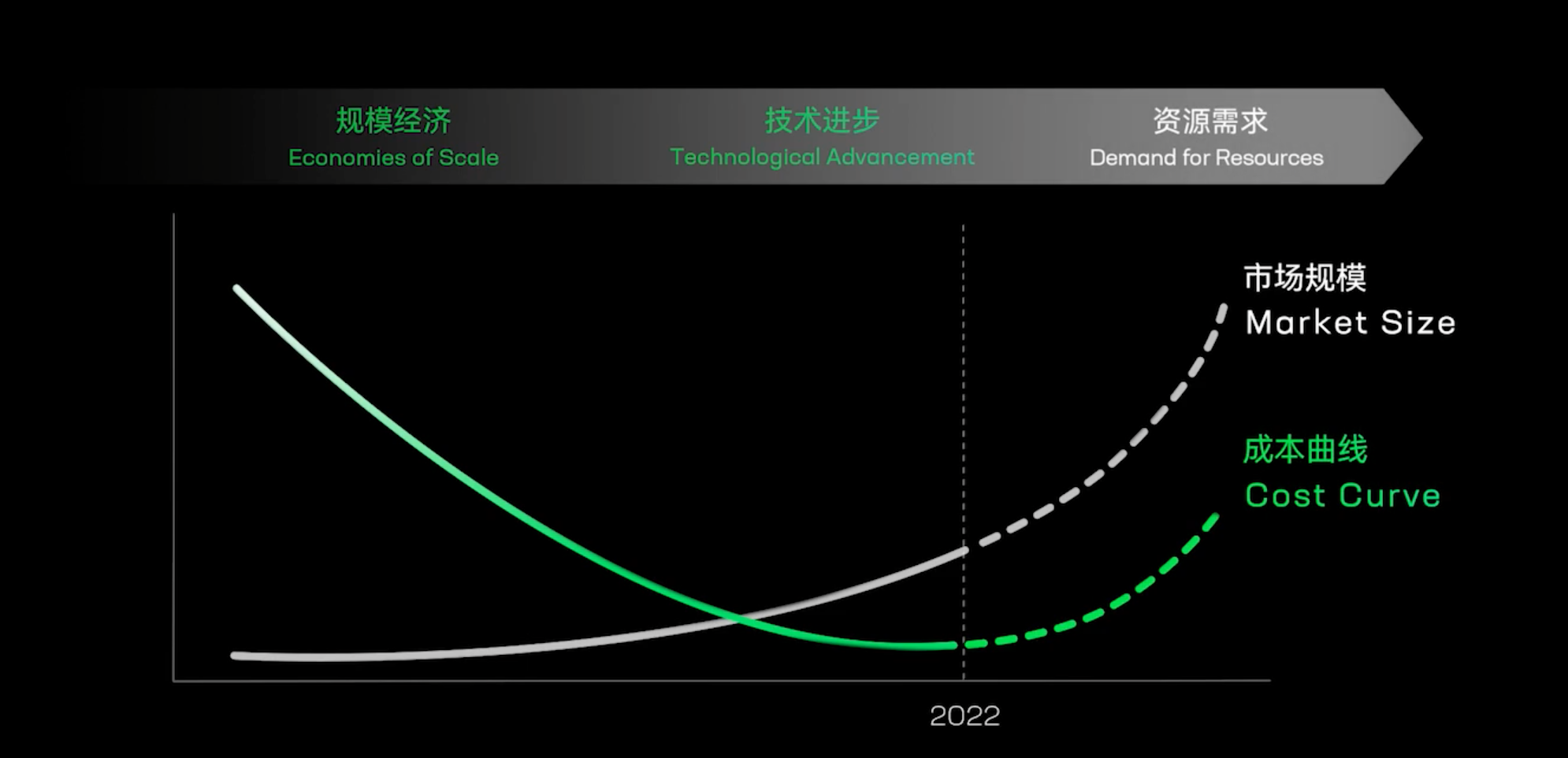
In addition, the battery cost curve is turning upward, and the cost advantage of shared battery swapping is starting to emerge. In the past few years, the technological progress and economies of scale have brought down the cost of batteries, offsetting the resource costs associated with the increase in battery usage. However, since 2021, the global new energy vehicle market has entered a new stage of explosive growth, and the demand for power batteries has surged. Under the leverage effect of supply and demand, the raw material resources for power batteries have risen significantly, and the cost of batteries has risen significantly, even causing price inversion in the battery recycling industry.
Ningde Times’ decision to enter at this moment is clearly a shrewd move, which suggests that they want to grasp the battery assets under their own system.
Beyond Battery Swapping
As the leader in the power battery field, it seems natural that Ningde Times has entered the battery swapping service track.
In China’s battery swapping field, the more well-known ones are Aodong New Energy and NIO. In the cooperation between BAIC and Aodong, battery swapping services are mainly targeted at the taxi and ride-hailing market. NIO relies on its own battery swapping models to create a brand-exclusive battery swapping system.
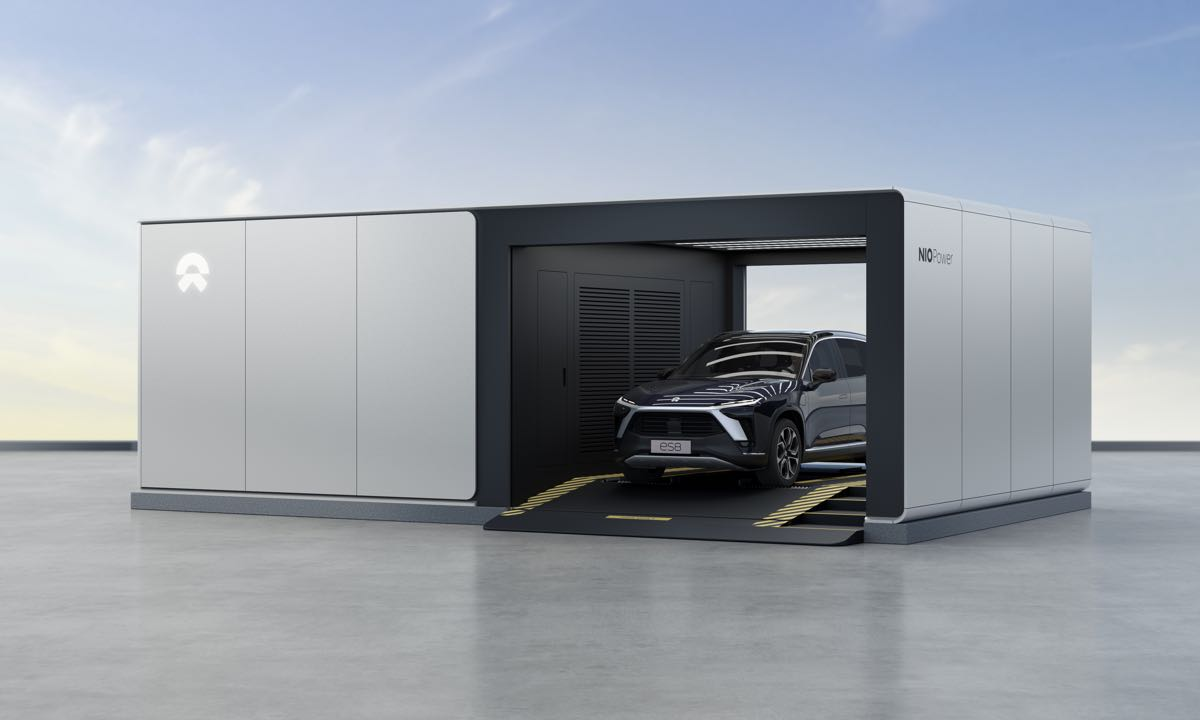
Unlike car companies that rely on their own automobile manufacturing resources, as a power battery supplier, Ningde Times has more room to play in the entire battery industry chain. In fact, Ningde Times has long ceased to be limited to the power battery supply sector. Energy storage and recycling are also important components of its industry layout. The launch of the battery swapping business will better connect the three major business sectors and complete the last piece of the jigsaw for the business ecosystem.
From a more macro perspective, Ningde Times’ decision to manage battery assets at this juncture may indicate a “battery swapping ecosystem” strategy.
Ningde Times is more likely to become the “Android ecosystem builder” of the electric age, creating an open battery swapping infrastructure platform for automobile manufacturers. By relying on the advantages of being a leader in the power battery field to establish a channel for cooperation with car companies, they will integrate most electric vehicle manufacturers into a shared ecosystem through battery swapping operations.
This is similar to Google providing the Android system. Manufacturers using the Android system are grouped around the Android ecosystem, maximizing resource sharing. Phone manufacturers can concentrate on software and hardware optimization with their strengths, while at the operating system level, they use the Android ecosystem to avoid reinventing the wheel. Both sides play to their comparative advantages, achieving a win-win situation.
The problem now facing car companies is why they should join Ningde Times’ battery swapping system?
In a word, the answer is “platform dividend”.Although the electric vehicle market has been growing rapidly, large-scale implementation has always been the biggest challenge for battery swapping systems. Different vehicle body designs and battery pack structures make it difficult to establish a universal swapping system, resulting in “reproductive isolation” for battery swapping systems between different brands.
For car manufacturers to implement battery swapping, they need to prepare the following:
- A dedicated swapping structure
- Swappable battery packs specifically designed for swapping
- A dedicated swapping station
In addition, a specialized battery operation system must be established. If the vehicle-battery separation system is to be implemented, there must be an asset management company for the batteries. Personnel are needed for daily battery swapping operations, as well as life-cycle management and end-of-life disposal. All of these requirements can be overwhelming for many enterprises.
However, now Ningde Times has provided these solutions as a platform and ecological operation service provider. For car manufacturers, battery swapping is no longer a costly choice that can potentially determine success or failure, but rather a new business area that can expand product coverage. It can reduce risks for enterprises in terms of comprehensive cost pressures and model planning.
For example, imagine that those micro electric vehicle models that sell for less than 100,000 yuan on the market can implement swapping and vehicle-battery separation with EVOGO. After removing the battery costs, the competitive price will increase, which can bring huge impact on sales. Without an existing platform, it is obviously impossible to develop a swapping system from scratch for an A00 level product line.
In the future, when the Ningde Times Battery Swap system is mature enough and becomes the dominant system in the industry, users who prefer battery swapping will prioritize purchasing vehicles that support EVOGO, bringing “platform traffic” naturally. To promote sales on the original basis, car manufacturers can launch combination battery-swapping models that support EVOGO to increase market competitiveness, while also bringing lower usage costs for consumers. It is a win-win situation.
Of course, for companies aspiring to become the “Apple of the auto industry,” EVOGO may not be their choice, but the new energy market is growing rapidly, and it is big enough to accommodate different types of energy supplementation systems. Finally, the pattern of different systems is not easy to understand in the short term.
On EVOGO, we see a lot of feasibility. Setting up modulating combination battery-swapping definitely meets consumers’ needs, and the difficult-to-fulfill demands of consumers are often the beginning of many huge opportunities.
Regardless of the outcome, Ningde Times’ entry into the swapping industry is undoubtedly good news for consumers.
